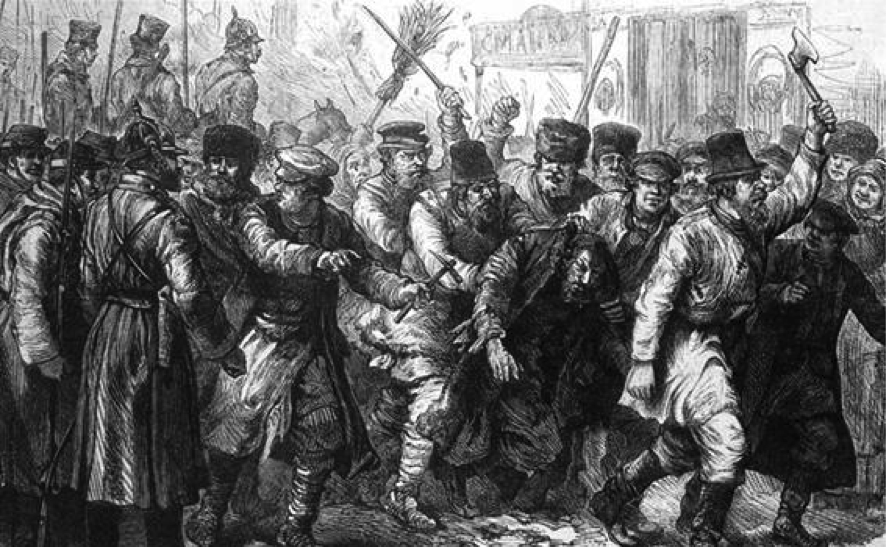April 26, 1881
Following the assassination of Czar Alexander II in March 1881 (see https://israeled.org/czar-alexander-ii-assassinated/), a wave of pogroms (violent attacks) against Jewish communities sweeps through southwestern Russia. The first pogrom occurs in Elisavetgrad (today Kirovohrad, Ukraine) on April 15. In the days leading up to April 26, officials in Kiev are told to prepare for disorder in the city.
The Ukrainian chief of police warns the Jews to protect themselves and the day before the disturbances begin, Jews are told not to venture out. The violence starts at noon on Sunday April 26 when a fight breaks out and spreads into the marketplace. Rioters soon begin destroying and looting Jewish shops and homes. Unlike subsequent waves of pogroms, the primary target of the 1881-1882 rioters is not individuals, but homes, businesses and synagogues.
On the second day of the Kiev Pogrom, police seize 124 copies of a leaflet printed by the Southern-Russian Workers’ Union. The leaflet proclaims:
Brother workers. You are beating the Jews, but indiscriminately. One should not beat the Jew because he is a Jew and prays to God in his own way – indeed, God is one and the same to all – rather, one should beat him because he is robbing the people, he is sucking the blood of the working man.[1]
The pogroms of 1881 and 1882 will lead to a change in the Russian policy towards the Jews, with restrictive new laws.
Jews will respond with mass emigration to the West, and the creation of new political movements, such as the forerunners to the Zionist movement, Hovevei Tzion (see https://israeled.org/first-gathering-of-the-hovevei-zion/).
The illustration depicts the violence of the pogrom.
[1] M. Kishkinky, “The Attitude of the Southern-Russian Workers’ Union toward the Jews (1880-1881)” in Harvard Ukrainian Studies, Vol. 6, No. 2 (June 1982), p. 206.








